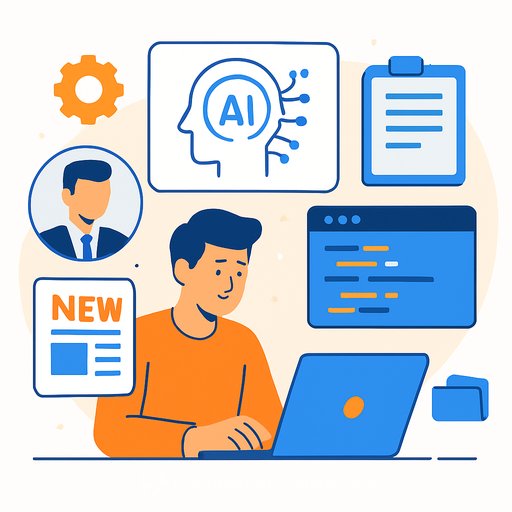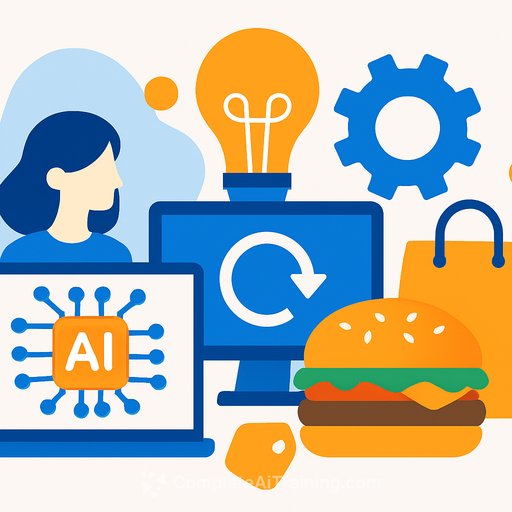OpenAI Atlas Kicks Off the AI Browser Debate: Who Actually Benefits?
AI browsers promise to read the web for you, surface what matters, and click through routine tasks. With Atlas and AI-first modes in Edge, Opera, Brave, and Arc, the question is simple: who really wins? Early signs point to focused, high-friction workflows. Casual browsing still favors the classic address bar.
Researchers and Knowledge Workers Gain the Most
Analysts, consultants, and journalists get clear upside. Tools like Atlas, Perplexity, and Arc Search compress literature reviews, filings, and papers into minutes instead of hours. Even shaving a slice off the time spent hunting for information changes the math fast.
The key isn't speed alone. It's citations, contrasts across conflicting claims, and structured briefs you can trust. Insist on one-click access back to source pages and transparent quotes.
- Require: source links, quote-level transparency, exportable briefs, and per-page traceability.
- Avoid: summaries without citations, hidden aggregation, and tools that can't jump back to the original section.
Sales and Support Teams Benefit from AI Browsers
Repetitive, text-heavy workflows get a lift. In one Fortune 500 call center, the combo of humans plus AI assistance increased output by roughly 14%, with the biggest gains for newer agents. See the Stanford/MIT study for the details.
Inside the browser, copilots can prefill forms, pull policy snippets, and summarize tickets without bouncing between systems. That speed comes with a price if data controls are weak.
- Controls: block copy/paste of sensitive data into public models, maintain audit logs, and allow on-prem or approved providers.
- Policy: clearly label what's stored, where it lives, and who can access prompts or outputs.
Developers and Technical Readers Using AI Browsers
Developers don't write code in the browser, but they live in docs, issues, and forums. Copilots in Edge, Brave, and Opera can summarize breaking changes, translate snippets, and cross-reference related GitHub threads. For spiky bugs that span three docs and two posts, that's real value.
But ground truth matters. Without versions, licenses, and reproducible code blocks tied to exact sections, you risk expensive detours.
- Require: section-level citations, version markers, and copyable code you can run as-is.
- Avoid: generic advice without links, or summaries that blur license or version constraints.
Accessibility and Non-Native Readers Gain Clarity
AI layers that simplify messy layouts into clean outlines and translate jargon reduce cognitive load. Instant multilingual summaries help screen-reader users and non-native readers move faster. That aligns with the W3C Web Accessibility Initiative emphasis on clarity and navigability.
Accuracy still matters. Summaries must preserve shades of meaning, especially in legal, medical, and financial content where wording shifts change outcomes.
Students and Lifelong Learners Using AI Browsers
Good tools act like study partners. They break down dense readings, build guides, and compare viewpoints across sources. The best make citations easy to check and highlight bias instead of hiding it.
Educators will keep guardrails. Attribution by default, boundaries for take-home tests, and visible lines between summarization and original work should be standard features.
Shoppers and Travel Power Planners Save Time
Comparison-heavy tasks are perfect for automation. Pull refund rules, baggage policies, return windows, and hidden fees into a single view. Total cost of ownership beats flashy "order it for me" demos most people won't use.
Disclosure matters. Users should know if affiliate economics influence recommendations and be able to switch to citation-first results.
Enterprise Compliance-Needy Buyers Eye AI Browsers
AI browsers are a controllable surface for genAI. Expect procurement to ask about data residency, model choice, default redaction, and SOC 2. Official, policy-controlled copilots will beat ad hoc plugins in security reviews.
Vendors that offer browser isolation, secure fetches from internal knowledge bases, and clear incident response will move fastest through approvals.
Who These AI Browsers Are Not For, At Least Yet
For news, streaming, and quick searches, AI often feels slower and sometimes wrong. Chrome and Safari retain most market share for a reason: speed and familiarity win. Watching an agent "click around" to book a table is fun once; after that, it's friction.
Two blockers still loom: hallucinations in summaries and privacy risks when sending page content to third-party models. Until those are boringly reliable, many will stick with standard browsing.
How to Know If an AI Browser Is Right for You
You work with long-form sources or policies every day. You need summaries across languages. Your workflow depends on structured extraction and citations. Your company can enforce data controls and logging.
- Run scoped pilots with clear endpoints: a single workflow, specific pages, defined user roles.
- Measure: time saved per task, citation accuracy, user trust (thumbs up/down plus comments), and rework rate.
- Decide: move to wider rollout if accuracy and speed hold for two cycles without extra QA.
Pilot Checklist for Product Teams
- Define "good" outputs upfront: format, fields, and citation style.
- Lock data routes: providers, retention, and redaction defaults.
- Enable one-click source tracing from every summary line.
- Track costs per session and per successful task.
- Create an escalation path for model errors and content disputes.
Getting Your Team Ready
If you're standing up pilots or formalizing policy, upskill the team before rollout. See practical paths by role at Complete AI Training: Courses by Job and checkpoint your program with AI certifications.
Bottom Line
AI browsers help most where tabs multiply, documents are dense, and answers must cite sources. If that's your day, the ROI is there. If not, keep a classic browser and add a light AI sidebar. Simple can still be smart.
Your membership also unlocks:






